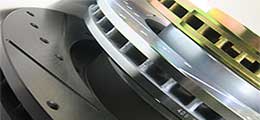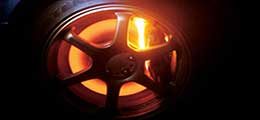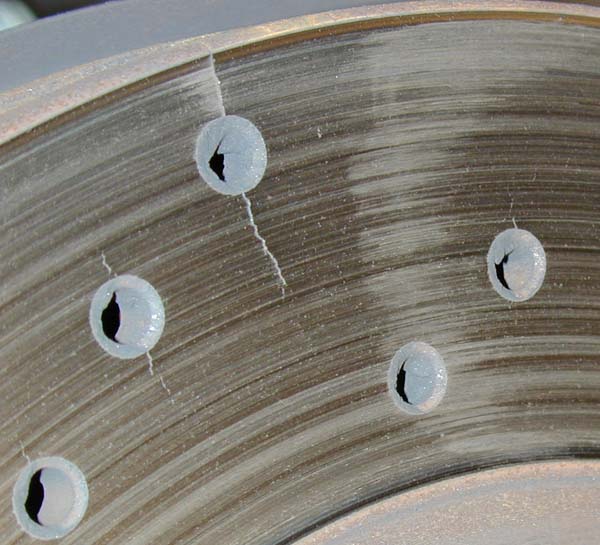
Source 3
Drilled rotors are produced in many different ways. The process to make a fine quality rotor is substantially different than what is used to make a poor quality specimen, and examples of each will be presented in this article.
Even though there are many different patterns of drilled brake rotors, what is important to focus on is the drill hole integrity. A ceramic drilled brake rotor can actually be cast at the factory as to eliminate drilling imperfections, but drilled rotor designs can still be created properly after casting with fine tools in cast iron as well.
Any imperfections in a brake rotor is subject to cracking when the brake rotor heats up and cools, so these drilled holes at the very least must be created with precision when added post-casting. When a brake rotor is drilled out manually, it often leaves the holes brittle at the edges. If you had a microscope, you could view these drilled edges to verify this. After the drill pattern is embedded in the brake rotor, the factory must use a special milling machine to file these edges down to be as smooth as possible.
Source 2
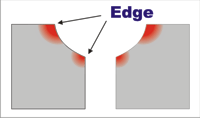
If the manufacturer goes one step further to prevent these cracks, they will put on a special chamfering or edging on the drill holes to reduce wear points. Some manufactures simply use countersunk or radius edging to do this, however sinusoidal edging minimizes the stress points to a maximum level.
Sinusodial Camfering
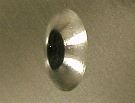
Source 2
When purchasing drilled brake rotors, you need to check to see if the drill patterns are consistent.
If you take a look at the following image, you can see an example of a drilled brake rotor that does not have this.
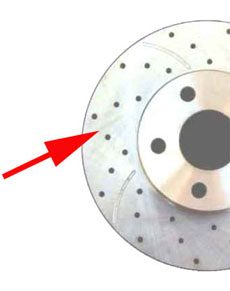
Source 1
This second rotor example shows a drill pattern that is not consistent on both sides…
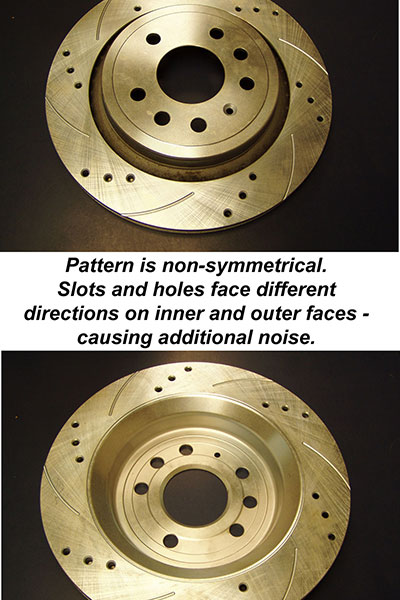
Source 2
In either of these cases, the rotors will not be properly balanced when installed and will cause vibration while rotating. This vibration will make a difference in how the brake system operates as a whole, and as a result, the vehicle. If money is spent to upgrade a braking system using these incongruent rotor designs, then the rotor purchase and installation would be counterproductive.
Another common finding in low end brake rotor designs are drill holes that compromise the structural integrity of the rotor. When the manufacturer drills these holes out, the drill bit enters the brake veins and degrades the structural integrity of the brake rotor as a result. These rotor veins are important for minimizing rotor flex during braking, and never should be drilled into.
To see an example of what an inappropriately drilled rotor looks like, see below:
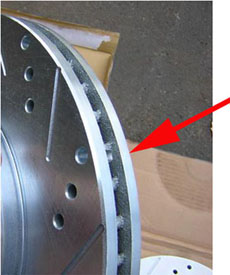
Source 1
Whether you are purchasing straight drilled rotors, cross drilled rotors, or diamond drilled rotors, make sure to verify the rotors have been drilled and milled properly before installing.
Reference Site 1: http://www.raceshopper.com/tech.shtml
Reference Site 2: http://www.raceshopper.com/sp_rotors.shtml
Reference Site 3: http://www.devtools.org/mt/rus/archives/000078.html



